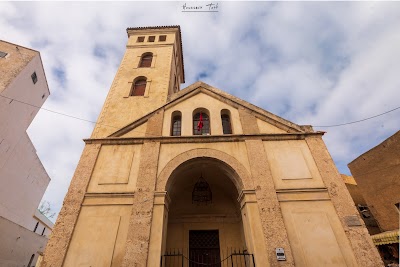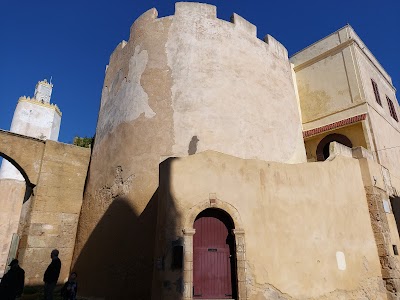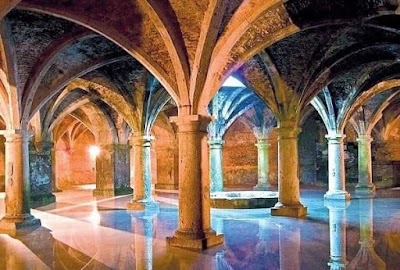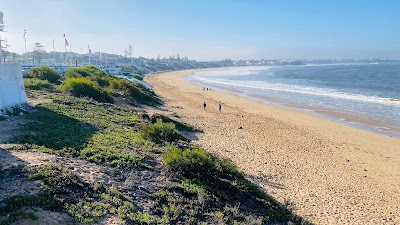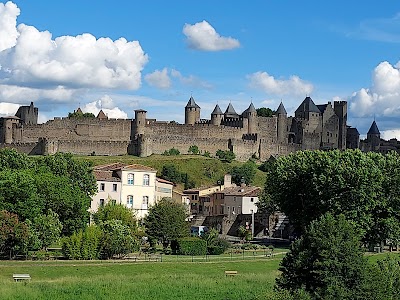Church of the Assumption (Église de l'Assomption)
Overview
The Church of the Assumption, nestled majestically in the coastal town of El Jadida, Morocco, stands as a significant religious monument and a cultural treasure. This remarkable structure narrates the rich history of the region and is located within the historic Portuguese City, known as the Cité Portugaise. The church exemplifies the fascinating interplay of cultures and architectural brilliance that have shaped El Jadida over the centuries.
Originally built in the 16th century during the Portuguese occupation of Morocco, the Church of the Assumption is a stunning representation of Gothic architectural style. The Portuguese presence in El Jadida, which they named Mazagan, left a lasting imprint on the city's structure and ambiance. As one of the oldest surviving buildings from that era, the church offers a glimpse into the architectural practices of the time, featuring ribbed vaults, pointed arches, and impressive stone masonry.
The city of El Jadida served as a crucial strategic location for the Portuguese as a key port and trading post. The construction of the Church of the Assumption was part of a broader effort to fortify and develop the city. Its location amidst narrow, winding streets and surrounded by fortified walls reflects the typical urban layout of Portuguese colonial cities, designed for both defense and community activities.
Beyond its architectural beauty, the Church of the Assumption holds profound cultural and historical significance. It symbolizes the religious diversity that once flourished in the region when Christianity and Islam coexisted within Moroccan society. The church remained a place of worship for Portuguese settlers and later European expatriates, long after the Portuguese control ended in the mid-18th century.
One of the most fascinating aspects of the Church of the Assumption is its resilience and adaptability throughout the ages. After the Portuguese relinquished control, the building underwent numerous transformations. Under Moroccan rule, it served various purposes, occasionally functioning as a storage space or meeting hall, reflecting the pragmatic reuse of historical structures that is common in Moroccan urban history.
Today, the Church of the Assumption is an integral part of the UNESCO World Heritage-listed Portuguese City of Mazagan. As visitors navigate through the old city and arrive at the church, they often feel transported back in time, surrounded by centuries of layered history. The church is not only a pilgrimage site for those interested in religious history but also attracts architecture enthusiasts and cultural explorers captivated by its harmonious blend of European and Moroccan influences.
Upon stepping inside, visitors are often struck by the serene and almost ethereal atmosphere within the ancient walls. The subtle interplay of light filtering through stained glass windows illuminates the weathered stone surfaces, enhancing the sense of timelessness and continuity. Within this sanctuary, one can imagine the myriad congregations that have gathered, prayed, and celebrated over the last five centuries.
Interesting facts about the Church of the Assumption further enhance its allure. For instance, the church once housed an organ that reputedly produced music resonating throughout the entire quarter, adding a musical memory to its layered history. Although the organ no longer exists, its legacy lives on in the echoes of the church’s past.
For foreign tourists, visiting the Church of the Assumption transcends merely viewing an ancient religious site; it involves engaging with a multidimensional narrative that weaves together tales of conquest, faith, perseverance, and communal identity. The church and the surrounding Portuguese City offer ample opportunities for exploration. Visitors can partake in guided tours that provide deeper insights into the historical context, architectural details, and the broader impact of Portuguese heritage in Morocco.
Ultimately, the Church of the Assumption in El Jadida is more than just a historical building; it is a living relic that continues to tell the story of a bygone era while remaining a cherished part of the local cultural landscape. Whether approached from a historical, religious, or architectural perspective, this landmark offers a rich and rewarding experience for any traveler interested in the diverse cultural heritage of Morocco.


